SEO (Search Engine Optimization) is vital to prevent your blog posts from staying buried on page 2 of Google and other search engines.
Think otherwise?
75% of people do not scroll past the first page of search results.
Search engines like Google have easy rules to follow that get your blog posts before your audience.
As a business owner with a website, you’ll get better brand visibility and boost your revenue when you achieve page 1 ranking. But first, here is a quick illustration showing why you need to optimize your blog posts.
Why Blog Post Optimization is Crucial
Let’s assume someone wants information on “how to become a fitness trainer.”
The individual types the query in the Google search bar and gets a list of results.
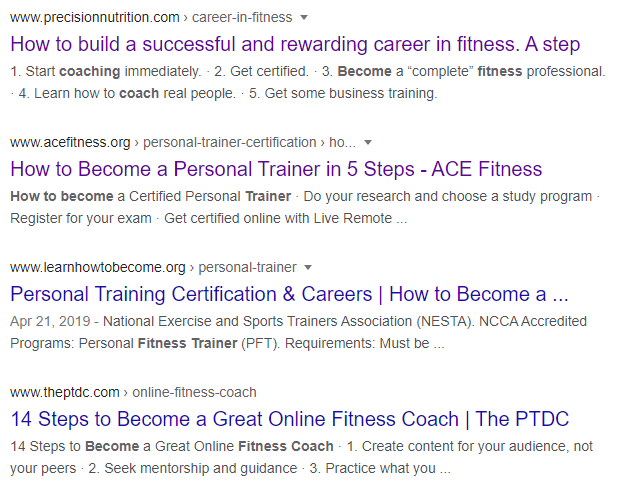
The goal of this blog post is to provide information on how to become a fitness trainer. But, tons of other blog posts discuss the same topic.
Unfortunately, Google can only show a few of the many blogs that discuss this topic. Since 75% of people do not scroll beyond page 1 of search results, it means any transaction that results from this query goes to website owners on the first page.
Doesn’t this mean you are losing money if your blog post content isn’t optimized to get on page 1 of Google? Of course, that’s a yes.
So, why not use these blog post optimization tips to turn the tide in your favor. They are:
- Simple to implement
- Vital to get your web pages to better Google ranking
- Necessary to give you more visibility in a crowded marketplace
- Critical to drive traffic and improve conversions on your website
If you use WordPress, you can easily implement these tips.
And if you are a busy business owner, you can get in touch to get help.
19 Tips for Optimizing Blog Posts for SEO
1. Keyword Research
This is the first and most crucial tip for optimizing blog posts.
There is no need to guess topics you think your audience will like. You can use the data from your keyword research to write relevant content that people want to read. You should always write content on what people are searching for, else, no one will read them.
There are several tools for doing keyword research like:
- Semrush – used by more than 6 million marketers.
- Ahrefs
- Google trends
- Ubersuggest
Here is the keyword overview of “how to become a fitness trainer” with Ubersuggest.

Search volume – 1,300 people search for this term monthly on Google.
SEO difficulty – 25. This keyword is relatively easy to rank.
Paid difficulty – 64. This keyword is super competitive for a paid campaign.
Cost per click – $8.96. This indicates how much businesses pay Google to use this keyword in their paid ads.
These data show that this keyword is very valuable and it will be profitable for businesses that use it in their content marketing strategy.
If you have a new website without SEO blog posts, you can target keywords with a search volume of less than 1000, and search difficulty of less than 40 with Ubersuggest.
2. Long-tail Keywords
Using long-tail keywords helps to refine your audience by providing laser-targeted traffic. Long-tail keywords consist of 3 or more words. And these keywords are less competitive because many businesses don’t target them.
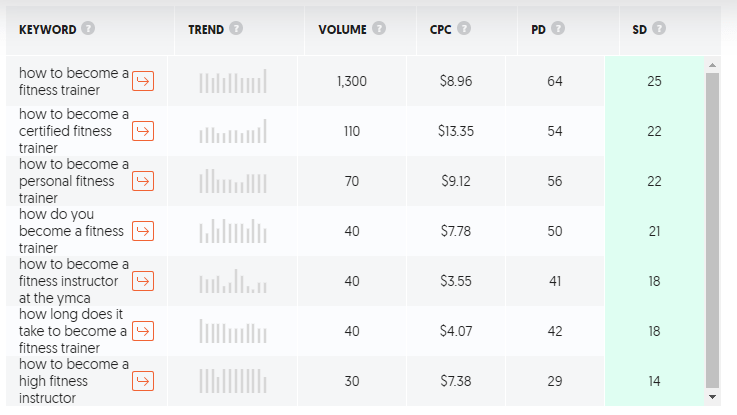
Target several long-tail keywords and create lots of content around these keywords. They will help you rank quickly, bring lots of traffic, and drive conversions.
You can take your long-tail keyword research a step higher by using long tail pro.
3. Insert Keywords in Subheadings
When inserting keywords in subheadings, ensure they flow naturally. Google doesn’t hesitate to derank web pages that disregard their simple rule on keyword stuffing.
Subheadings also help to provide direction for your posts. For instance, before writing blog posts like effective lead magnet ideas for coaches & consultants, I had the subheadings ready. This makes the process of creating SEO blog content easier.
Here’s a skeletal structure for writing search engine optimized blog posts:
Introduction
State why your reader should read your blog post in 200-400 words.
Body of your blog post (1800-2500 words)
Subheading 1
Points
Subheading 2
Points
Subheading 3
Points
Conclusion (200-400 words)
4. Use your Focus Keyword Early
Your focus keyword is the primary search term you want to rank in your blog post. For instance, the primary search term of this blog post is “optimize blog posts for SEO.” SEO tools like the Yoast SEO plugin evaluate your blog content and provide feedback that helps increase your chances of ranking higher for the primary search term.
Placing the focus keyword early when introducing your blog post helps Google crawlers to understand what you are discussing.
5. Use the Best H1 tag
Google takes H1 tags seriously and uses them as essential ranking factors.
H1 is an HTML tag that specifies the heading on a web page.
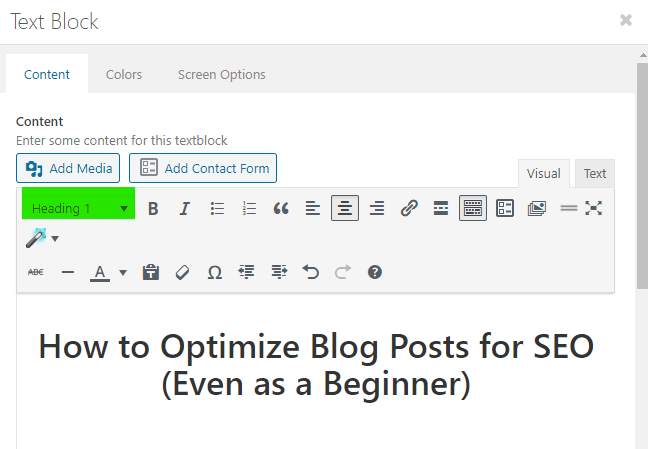
Many times, your H1 tag will be the title of your blog posts. It is the first thing a visitor to your blog post will see.
Here are some vital points to note for using H1 tags.
- Keep your H1 tag between 20-70 characters
- Creatively insert your long-tail keyword in your H1 tag. It helps Google crawlers identify what your content discusses, makes the blog post rank better, and increases the blog post’s visibility in search results.
6. Latent Semantic Indexing (LSI)
Latent semantic indexing is the use of keywords related to the focus keyword of your post. There are many tools for LSI keywords research like keywordtool.io.
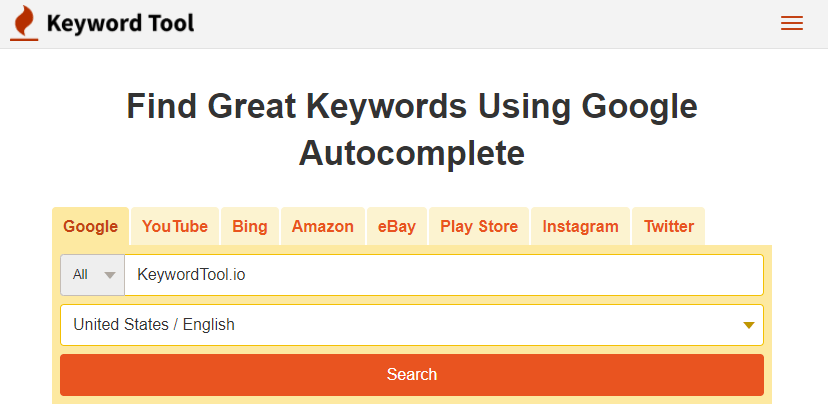
You can’t fill your blog content with all the LSI keywords you find. So, write your content and insert some LSI keywords when you finish.
For instance, these are some LSI keywords I will consider integrating into this post:
- What is SEO?
- Does blogging help SEO?
- SEO best practices for blog posts
- SEO blog optimization
- Ways to optimize your blog posts for SEO
Pro tip: You can also use some of these keywords in naming your images.
7. Using and Optimizing Images
Have you visited a website and the images failed to load? If the website owner correctly implemented image SEO optimization, you will see an Alt text.
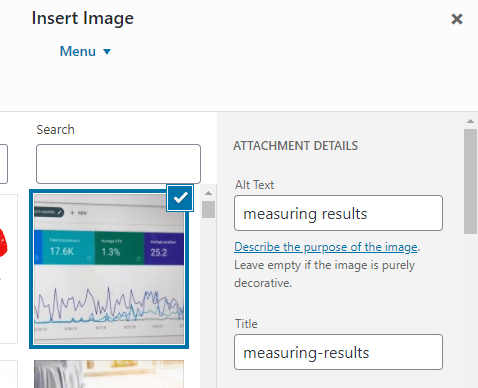
The Alt text is a significant SEO ranking factor. Alt text is useful for:
- Telling visually impaired people what the image is about
- Describing the image content to search engine crawlers
- Describing the image if the browser fails to load it
SEO optimization of your blog posts is one of the many reasons why you should use images.
Images also help you break blocks of text and boost the user experience of web visitors. There is a claim that blog posts with quality images get 94% more views than those without them.
Also, using excellent images offers the opportunity to rank quickly in Google image search. This will bring a significant amount of traffic to your website. You can use Canva to create unique images or use royalty-free images.
8. Videos
Adding videos to your blog post is an excellent way to optimize your blog posts for SEO.
Marketing statistics for the year 2020 show videos are increasingly competing with ebooks and blogs as the primary content marketing strategy. Many persons prefer to engage with videos, especially millennials.
Video content will increase your search ranking, especially if you optimize or rank the video. They also reduce the bounce rate because your web visitors will remain on your website to watch the video.
Pro tip: Do not directly upload videos to your blog posts or your website. They will slow the site speed and this is crucial for search engine optimization. Create a YouTube channel and upload your videos there. You can copy the video link and embed the YouTube video in your post.
9. URL
Look at this URL 👉 http://www.theblog.com/blog/2011/02/01/kansas-city-star-complains-about-the-lack-of-response-during-his-response-to-his-point-he-didnt-hear-and-doesnt-understand
Of course, I formulated this URL. It doesn’t exist.
The point is, short URLs are better for your readers and they increase your organic ranking on search engines. A URL like https://www.contentestate.com/lead-magnet can do the job. For a better URL structure:
- Include your focus keyword or long-tail keyword
- Use a single domain
- Make it readable
- Match the URL with the title of the blog post (Example: yourdomainname.com/how-to-optimize-blogposts-for-SEO)
- Keep the characters between 50-60
- Remove unnecessary characters.
10. Internal Linking of Blog Posts
Internal linking links a page or blog post on a website to another page or blog post on the same website. As you blog consistently, the number of contents you have will increase.
Make it a habit of linking your content because internal linking is vital for SEO.

Internal linking is an excellent way of directing your website visitors to other posts. It also makes your older posts remain relevant since they continue to get clicks.
11. Outbound Links
Outbound linking is the opposite of internal linking. These are links from a page or blog post on your website to another page or blog post on a different website.
Outbound links are vital ranking factors for on-page SEO. Keep your linking (internal & outbound) process natural. Don’t force it. For WordPress users, the Yoast SEO plugin helps a lot in linking and other on-page SEO efforts.

Pro tip: The websites you link to creates a mental perception of your brand to your visitors. Link your SEO blog posts to only reputable brands.
12. SEO-friendly Meta Description
One of the SEO best practices for blog posts is having excellent meta descriptions. They are the short information beneath the blog post title when you do a Google search. They tell the reader what the post is about in short sentences.

An SEO-friendly meta description will help your blog posts stand out in search engine result pages. Optimized meta descriptions are short, not more than 160 characters (Google will cut out extra characters), clear, include the focus keyword, and convinces your reader to click.
You can use the Yoast plugin to write a search engine-friendly meta description.
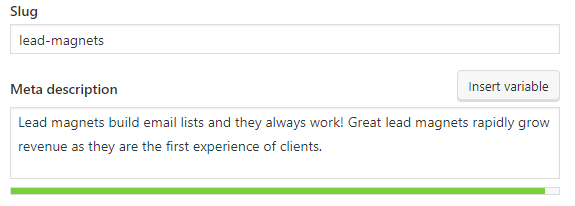
13. Make your Blog Post Mobile-friendly
Many persons consume content with their mobile devices.
Examples of these contents are text, images, and videos. All of these could be on your blog post.
A mobile-friendly blog post is one that provides an excellent read on mobile devices. This is more than having a responsive design and it brings us to the next point.
14. Use Short Sentences and Paragraphs
Many users scan content when they read online.
People don’t enjoy reading a cluster of sentences with no paragraphs. If they can’t scan the content to know what you are discussing, they may close the page and exit your website.
Using the following won’t only make your content easy to scan; it will provide an excellent experience for your audience.
- Use whitespace
- Subheadings
- Images
- Bullet points
Grammarly is an essential tool for checking SEO blog post correctness, clarity, engagement, and plagiarism. It can also help rephrase long sentences into short sentences.
15. Aim for Long-form Blog Posts
According to SEMrush 2019 report, 3,000+ words blog posts get 3x more traffic, 4x more shares, and 3.5x more backlinks than shorter articles.
It makes sense to produce shorter content since people have a short attention span and scan blog posts. Well, don’t fall for that. Here’s why:
- Google favors long-form content
- Many websites produce short-form content of fewer than 700 words. You’ll easily outrank them by writing 2000+ words of quality content.
- From the SEMrush report, it is evident that longer content provides more visibility for your business. Long-form content attracts more social shares, traffic, and quality backlinks.
- Do you like to buy all your foodstuff in a mall with everything you need, or you prefer shopping at several stalls?
I bet you chose the former.
Long-form content is like selling everything your audience needs in a single location.
Your audience shouldn’t visit dozens of websites for the information you can provide.
Creating long-form content positions you as an authority and makes you the go-to when your audience needs the solution you provide.
16. Categorize your Content
Categories and tags help sort content and they are useful to search engines.
For instance, the category of this blog post is search engine optimization. The tags of this post could include:
- Blog optimization
- Blog writing
- Keyword research
- Content linking, and so on.
You can liken categories to a book chapter and tags as subheadings of the book.
You can add categories and tags on your WordPress dashboard when you create and edit a blog post.
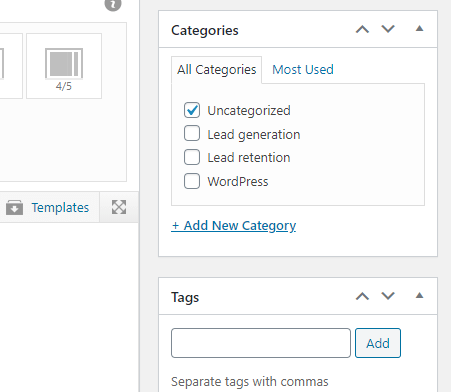
You can also add new tags and categories by going to Posts » Categories and Posts » Tags.
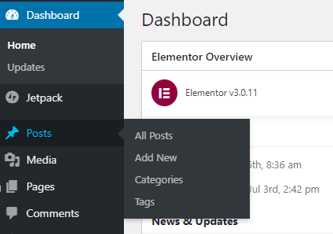
There are influencers in every niche. For instance, we have Neil Patel, Brian Dean, Ryan Deiss, and several others in the digital marketing space. If any of these influencers share your content or links to your blog post, you’ll get a flood of traffic.
It is challenging to get influencers’ attention because they are super-busy and receive tons of emails daily. To stand out, you need to create effective blog posts that influencers like.
Providing value to influencers can help get their attention. Here are some vital steps:
- Connect with the influencer on social media
- Follow their website
- Read their content
- Consistently leave meaningful comments that ensure you get noticed
- Subscribe to their email list
- Reply to messages from the emails they send. People love replies.
- Check if there are issues on their websites that they can fix, for instance, a broken link
- Once you’ve built a great relationship, talk to them about your content and ask if they could share it and link back to it.
Getting backlinks for your blog posts will give your business a massive makeover once the gains start pouring in.
18. Social Media
The goal of every content is to reach a substantial number of your ideal audience. As a marketer seeking to optimize a blog post, making social buttons easy to find will help you immensely because social shares get you free clicks. Make social media share buttons visible on your post.

19. Optimize Older Blog Posts
Optimizing older blog posts helps to improve your search rankings. Google loves fresh content. As you continue updating your blog posts with more information, you make them appear new. Linking your content is an excellent way of optimizing older blog posts.
Find creative ways to link back to your older posts on your new blog post. This will give the old blog post some SEO juice. Do the same for the latest blog post by adding links to the new post from the old post.
Consistency is key. The more you update your content, the more it appears relevant. Try to do this regularly.
Conclusion
Having great content isn’t enough for Google to fall in love and send traffic to your website. If you don’t optimize your blog posts for search engines, many persons won’t know it exists. It’s the cold and hard truth.
There are many persons in your niche or field. These people have websites. Like you, they want visibility of their blog posts on page 1 when a prospect searches for information.
Unfortunately, Google can’t display all websites. Play by the rules. Optimize your blog posts and clients will come your way once they perceive you are an authority.
Many times, business owners fail to promote their blog posts. Writing and optimizing your blog post is one out of a three-step process.
After writing your blog post, you need to promote it via social media. Afterward, check how the content performs with Google Analytics. This helps you to know what works for your audience.
I hope this article helped you optimize your blog posts for SEO.
If you have questions, please leave them in the comments section.

Precious Oboidhe is a B2B SaaS content strategist and writer for hire. If you need help with strategizing and creating assets for the different stages of your content marketing funnel, get in touch.


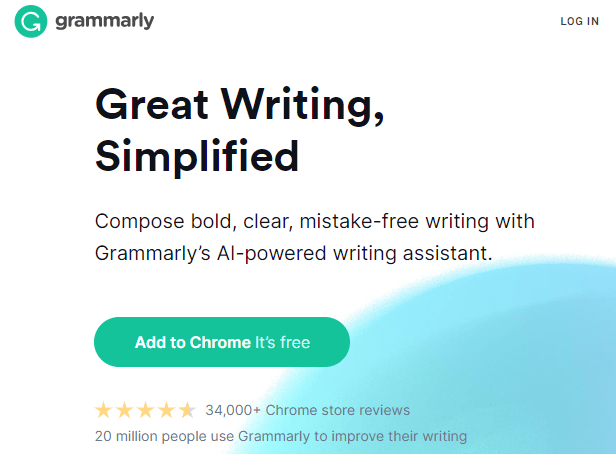


Leave a Reply
Want to join the discussion?Feel free to contribute!